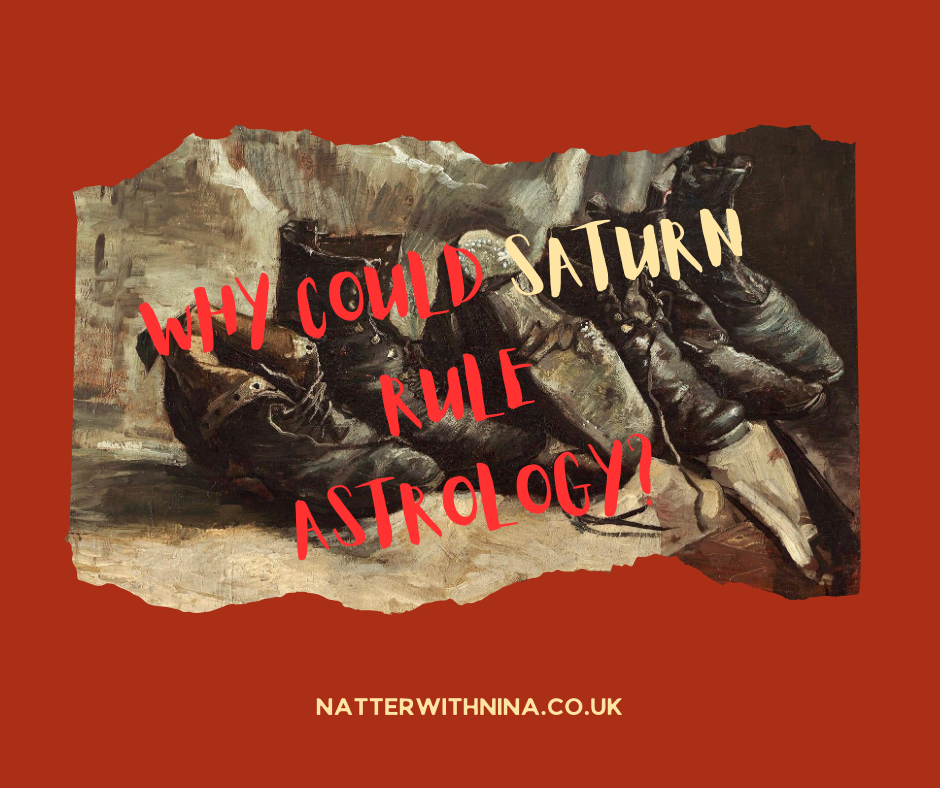I should not blow my own trumpet but it does feel good to do so.
During my astrology study I have often heard that astrology is ruled by Uranus. Even though some arguments could be made in this direction, personally I am hesitant to accept this statement as being the whole story.
Perhaps people repeat this tired stereotype without really thinking it through or they are compelled by the flattering image of the astrologer as an unorthodox genius.
In my opinion, a strong case could be made that astrology is ruled by Saturn and Mercury. Recently I have written about Saturn’s rulership of astrology in my post “Why could Saturn rule astrology?“
https://www.natterwithnina.co.uk/why-could-saturn-rule-astrology/.
Meanwhile Mercury went retrograde and the rear event of Jupiter’s conjunction with Uranus in Taurus occurred. It brought about a big crises in my faith in astrology.

Fortunately, Mercury turn direct two days ago and I decided to listen to one of my favourite astrologers Rick Levine talking about the houses in the chart.
Amazingly, he confirmed that astrology could be governed by Saturn and Mercury. He also talked about modern astrology, the astrology of nowadays and the future.
https://youtu.be/dcu05EJEK3s?si=_EYms9gISlCsu5Hv

With this encouragement I will proceed to share my thoughts about the possibility of Mercury being an astrological governor.
My main arguments are based on the neutral nature of Mercury and its acceptance and easiness with paradoxes.
Mercury is impartial. Mercury does understand that basic astrological elements such as planets, signs, houses and aspects do not exist on the shaking ground of “good” and “bad`’, “benefic” and “malefic”, “feminine” and “masculine”, “positive” and “negative”.
He deals with data without entering into the disputable areas of morality and outdated classifications.

Yet, remember, Mercury is the God of communication and learning including divination.
He was the only God who could go to the underworld, traveling with the souls across the River Styx and come back.


Mercury understands that paradoxes are the essence of life.
Paradoxes can make it exciting. Paradoxes can make it hard.
Paradoxes make “putting people into boxes” redundant.
Mercurial genius thrives on the ability to find the common ground between polarities, unfamiliarities, unknown terrains and to suggest feasible solutions or at least workable explanations and directions.

Astrological art highlights the paradoxes in the chart, tries to make sense of them and to take guidance from them.
Astrology is stratospherically more than producing long lists of key words, explaining what the single elements mean or using the last technological tool.
It seems that the question of how well astrologers see and explain the charts’ paradoxes have significant weight.
I believe a high degree of virtuousness is a rare quality and in my experience only a few astrologers and teachers have achieved it.
The good news is that when they have acquired the mastery in question they cannot hide it. It works like magic.

Someone will argue that it is the strike of Uranus.
Maybe, but I doubt it.
That is Mercury giving you the message to embrace paradoxes and even to try to make friends of them.





















































































